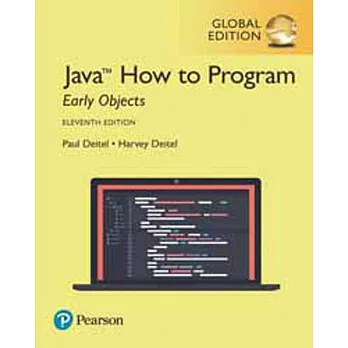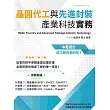For courses in Java programming
This package includes Pearson MyLab Programming.
Unparalleled breadth and depth of object-oriented programming concepts
The Deitels?groundbreaking How to Program series offers unparalleled breadth and depth of programming fundamentals, object-oriented programming concepts and intermediate-level topics for further study. Java How to Program, Early Objects, 11th Edition, presents leading-edge computing technologies using the Deitel signature live-code approach, which demonstrates concepts in hundreds of complete working programs. The 11th Edition presents updated coverage of Java SE 8 and new Java SE 9 capabilities, including JShell, the Java Module System, and other key Java 9 topics. [Java How to Program, Late Objects, 11th Edition also is available.]
This package includes Pearson MyLab?Programming,an online learning system designed to engage students and improve results. Pearson MyLab Programming consists of a set of programming exercises correlated to the programming concepts in this book. Through hundreds of practice problems, the system automatically detects errors in the logic and syntax of their code submissions and offers targeted hints that enable students to figure out what went wrongnd why.
MyLab should only be purchased when required by an instructor. Please be sure you have the correct ISBN and Course ID. Instructors, contact your Pearson rep for more information.
本書特色
This title is a Pearson Global Edition. The Editorial team at Pearson has worked closely with educators around the world to include content which is especially relevant to students outside the United States.
Prepare students to meet Java programming challenges
.Rich coverage of programming fundamentals; real-world examples.
.Friendly early classes and objects presentation.
.Use easily with Java™ SE 8 and/or the new Java™ SE 9.
。Java SE 9 content is in easy-to-include-or-omit sections.
。Perfect for instructors who want to stay in Java SE 8 for a while and ease into Java SE 9.
。Perfect for instructors who want to add JShell (Java 9’s interactive Java) to their Java SE 8 or Java SE 9 courses.
.Signature live-code approach teaches programming by presenting the concepts in the context of complete working programs.
.The text’s modular organization is appropriate for introductory and intermediate programming courses, and helps instructors plan their syllabi.
.Comprehensive coverage of concepts and topics:
。Interactive Java through JShell–Java SE 9’s most exciting new pedagogic feature.
。Java 9 topics: Modularity (online), collection factory methods and other language and API enhancements.
。Lambdas, sequential and parallel streams, functional interfaces, immutability.
。JavaFX GUI, 2D and 3D graphics, animation and video.
。Composition vs. Inheritance, dynamic composition.
。Programming to an interface not an implementation.
。Files, input/output streams and XML serialization.
。Concurrency for optimal multi-core performance.
。Other topics: recursion, searching, sorting, generics, generic collections, data structures, optional Swing GUI, multithreading, database (JDBC ™ and JPA).
.Access to the Companion Website (http://www.pearsonhighered.com/deitel) is available with the purchase of a new textbook and provides extra hands-on experience and study aids, including:
。Extensive VideoNotes allow students to view the problem-solving process outside of the classroom–when they need help the most. In the VideoNotes, co-author Paul Deitel patiently explains most of the programs in the book’s core chapters. Students like viewing the VideoNotes for reinforcement of core concepts and for further insights.
。Additional chapters and appendices for advanced courses.
。Evolving Java SE 9 content
。Source code for the book’s examples (also available at deitel.com/books/jhtp11).
Facilitate Learning with Outstanding Applied Pedagogy
.Programming Wisdom: Hundreds of valuable programming tips facilitate learning. Icons throughout the text identify Software Engineering Observations, Good Programming Practices, Common Programming Errors, Error-Prevention Tips, Portability Tips, Performance Tips, and Look-and-Feel Observations(for GUI design). These represent the best the authors have gleaned from a combined nine decades of programming and teaching experience.
.Hundreds of self-review exercises with answers.
.Hundreds of interesting real-world exercises and projects enable students to apply what they’ve learned in each chapter (Instructor Solutions Manual contains answers for most).
.“Making a Difference” exercises encourage students to use computers and the Internet to research and address significant social problems.
.Most of the programming exercises are titled to help instructors select the most appropriate exercises for homework assignments.



 天天爆殺
天天爆殺  今日66折
今日66折 
























 博客來
博客來 博客來
博客來 博客來
博客來 博客來
博客來 博客來
博客來